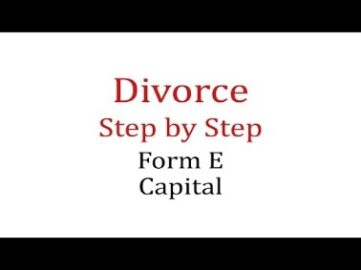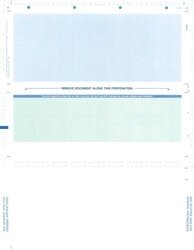
Credit memorandum and debit memos can be used to change a customer’s account balance. A customer’s debt increases with a debit memo, while a credit memo reduces credit balance. This can be an alternative version of an invoice to a customer, and is used when the amount billed on the original invoice was too low. Thus, the debit memo is essentially an incremental billing for the amount that should have been included in the original invoice. This usage is not common, since many companies simply re-issue the original invoice with an adjustment, or issue an invoice for the incremental amount, rather than use a debit memo.
Although a debit note adds an extra payable amount to the original invoice. The credit memo cuts off the total amount of the original invoice to a certain extent. For example, if you have $10.000 in your bank account while the bank needs to charge you $100. The bank issues a bank debit note charging you with the fee for a specific service and your balance now has become $9.900.
Bank statement debit memos
A credit memo appears as a separate transaction from the original purchase. If there is a small credit balance remaining in a customer account, a debit memo can be generated to offset it, which allows the accounting staff to clear out the balance in the account. A debit memo on a company’s bank statement refers to a deduction by the bank from the company’s bank account. In other words, a bank debit memo reduces the bank account balance similar to a check drawn on the bank account. There can be a few different types of debit memos depending on the situation and the industry.

Because it’s a checking account, you might get charged $20 per month as a service fee. When this happens, your account will include a debit memo that notes the deduction amount. The technicalities of banking, purchase, and sale transactions are best left to your financial institution or a business’s accounting department. Still, it’s good to know what a credit memo or debit memo looks like next time it shows up on your bank statement. When a customer is accidentally undercharged for goods or services provided, a debit memo gets issued. It’s done as an adjustment procedure in business-to-business transactions.
Debit Memo Meaning
To help tax professionals and others, the IRS continues to provide additional legal clarity around ERC rules. On July 20, the IRS issued a legal advice memorandum applying the statutory requirements to five different scenarios. Contrary to advice given by unscrupulous preparers, this guidance makes clear that supply chain disruptions do not qualify an employer for the credit unless they are due to a government order. While smaller regional banks may still serve marijuana companies, major institutions and credit-card networks like Visa and Mastercard avoid facilitating marijuana transactions on their networks due to federal illegality.
Warren mother who took sexually explicit photos of baby deserves ‘strongest sentence possible,’ prosecutors say – The Macomb Daily
Warren mother who took sexually explicit photos of baby deserves ‘strongest sentence possible,’ prosecutors say.
Posted: Wed, 02 Aug 2023 11:50:33 GMT [source]
The notice gets sent out so the client can then rectify the situation. Debit memorandums are also commonly referred to as a debit memo or a debit note. A debit memorandum is a notification that a deduction has been made by a bank or business for (e.g., a fee it charged you). Your account balance has been reduced so no payment is required from you.
What Is a Credit Memo?
A debit memo is common in the banking industry in several situations. For example, a bank may issue a debit memo when it assesses fees. The fee will be debited (or deducted) from the customer’s account and recorded as a debit memorandum to indicate that it is an adjustment rather than a transaction. A debit memo may also be used when adjusting an incorrect account balance.

A bank creates a debit memo when it charges a company a fee on its bank statement, thereby reducing the balance in the company’s checking account. Thus, if a bank account has a balance of $1,000 and the bank charges a service fee of $50 with a debit memo, the account then has a remaining balance of $950. Of the usages noted here, bank transactions represent the most common usage of debit memos. When an account balance gets reduced for a cause other than a cash withdrawal a debit memorandum is given to the account holder in retail banking. Debit memos may result from bank service fees, fines for returned checks, or fees for printing additional checks.
Debit Memorandum vs. Credit Memorandum
Unscrupulous promoters may lie about eligibility requirements, including refusing to provide detailed documents supporting their computations of the ERC. In addition, those using these companies could be at risk of someone using the credit as a ploy to steal the taxpayer’s identity or take a cut of the taxpayer’s improperly claimed credit. The IRS has trained auditors examining ERC claims posing the greatest risk, and the IRS Criminal Investigation division is working to identify fraud and promoters of fraudulent claims.
- You issue a debit note to return the payment offset to the customer.
- Customers (or buyers) are informed by a debit memo as to why their account balance has decreased or why they now owe more.
- If there is a small credit balance remaining in a customer account, a debit memo can be generated to offset it, which allows the accounting staff to clear out the balance in the account.
- One of the types of debit memos is the ones that are used in incremental billings.
- If the credit balance is significant, the business would probably refund the customer rather than generate a debit memo.
- In order to get access to credit card payments, marijuana should become legal at the federal level, but the current situation suggests this is not going to happen anytime soon.
In either of these cases, the buyer has the right to return the damaged or incorrect inventory for a full refund. Both notes notify customers about a change in their account balance either by increase or decrease. A debit note is a commercial seller’s, buyer’s, or financial institution’s notification of a debit placed on a recipient’s account in the sender’s books. At first glance, a credit memo and refund might seem like the same thing, but there’s a difference. Technically, a refund involves a reversal of the original purchase transaction.
Examples and Definition of a Debit Memorandum
Debit memorandums are also used in double-entry accounting to indicate an adjustment that increases a customer’s amount due. With more than 2.5 million claims coming in since the program was enacted IRS claims digital payroll solutions to keep up with the future of work processing slowed due to the complexity of the amended returns. The IRS has made substantial progress on these claims this year, with 99 percent of claims approximately three months old as of mid-July.
“This was not how the law was meant to work, and Congress can help with this situation,” Werfel added. The long-waited SAFE Banking Act proposes to enable banks to conduct business with marijuana companies operating legally in states that have legalized marijuana. Because of its federal illegality, the marijuana industry operates primarily in a cash economy, resulting in limited non-cash options for purchasing marijuana products.
- When you take the item back to the store, the clerk will issue you a refund by reversing the original purchase transaction.
- Since the term debit memo contains the word “debit”, which refers to the amount on a ledger’s left side, it is simple to recall what it signifies (when there is no other meaning to the Debit).
- A bank creates a debit memo when it charges a company a fee on its bank statement, thereby reducing the balance in the company’s checking account.
- To show a charge for something that isn’t a typical invoice item, you can create a debit memo.
As well, it can be fairly common for debit memorandums to get used within the double-entry accounting system. This helps to indicate when adjustments get made and it will end up increasing the total amount due. A debit memorandum is a specific type of notice that a client would receive if their account balance happens to decrease.
In order to get access to credit card payments, marijuana should become legal at the federal level, but the current situation suggests this is not going to happen anytime soon. But what both consumers and businesses in the marijuana space are asking for are credit card payments. However, dispensaries can’t accept credit card payments due to federal-level marijuana illegality. Mastercard has instructed payment processors and banks not to accept marijuana transactions on its debit cards.
As Many More States Enact Education Savings Accounts … – EducationNext
As Many More States Enact Education Savings Accounts ….
Posted: Tue, 01 Aug 2023 09:04:13 GMT [source]
The customer would either receive or his applicable state government. On the other hand, if the sellers want an extra fee, for several reasons, after a buyer paid off the invoices. The seller would issue a debit note to the buyer telling him there is another fee for a certain increase in the total cost of the product or service. An entry that informs clients of a modification or adjustment to their account that lowers the balance is referred to in accounting as a debit memorandum. There are several uses of the term debit memo, which involve incremental billings, internal offsets, and bank transactions. A commercial seller, buyer, or financial institution may notify of a debit placed on a recipient’s account.
